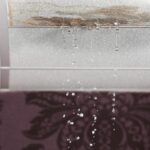
Buying paint can be confusing. There are oil paints, emulsion paints, lime paints, enamel paints, bitumen paints, plaster paints, epoxy paints, latex paints, lead paints…. the list goes on and on. How does anyone know which paint to use for which type of surface? One of the most common types you are likely to encounter is vinyl paint. Basically, vinyl paint is a water-based paint that is suitable for substrates such as coatings, floors and plastics. It’s certainly not a universal paint (if you apply it to the wrong kind of surface, you’ll always have to wait for it to last 10 years), but it does offer great benefits when used properly. If you’ve always wanted to know more about the uses and benefits of vinyl paint, here’s what you need to know.
What is vinyl paint?
There is a whole world of colors, and vinyl is just one of them. Still, it is one of the most common and it is almost certain that you will need it at some point. So what is it? As Hunker explains, vinyl paint is a water-based paint that contains a percentage of vinyl plastic. It is primarily intended for use on surfaces such as floors, plastics, chair covers and upholstery. It is exceptionally abrasion resistant: once it has penetrated the surface, it becomes one with it – if you want to remove it later, you have to use a lot of elbow grease. Vinyl paint is not the kind of paint that can be applied to anything: if it is applied to the wrong kind of surface, the paint will not adhere and will just slide off.
What are the different types of vinyl paint?
Although all vinyl paints have the same basic properties, the situation becomes a little more complicated when one considers the wide variety of formulas available for vinyl paints. Since each formula is designed for a specific use, it is helpful to become familiar with each one. The most common type you are likely to encounter is vinyl paint sold in one-gallon drums. Of all the types, it most closely resembles ordinary interior paint. It is most often used for coating flexible plastics, vinyl siding, interiors and floors. It has a very fine consistency that makes it easily adhere to the applied surface. It can be difficult to remove due to its good adhesion.
Vinyl spray paint is used for the same general purposes as the previous type. However, instead of applying it with a brush or roller, it can be sprayed directly onto surfaces, making it preferable for furniture, awnings and small areas. Vinyl Siding Paint and Exterior Siding Paint are designed to give a durable, waterproof finish to exterior walls and siding. Exterior vinyl siding paint is heat and water resistant and resists chipping and fading.
What is vinyl paint for?
Although it is not a universal paint, vinyl paint has countless applications. When used outdoors, it provides solid and durable protection from the elements. When used indoors, it can instantly touch up and improve outdated vinyl surfaces. When used on vinyl floors, it can refresh the look of a room for a fraction of the cost of replacing the floor. Because it penetrates well into the surface, it is a good option for rooms that are heavily used.
What types of surfaces are best suited for vinyl paint?
Vinyl varnishes can be used on a wide variety of surfaces and are generally known for their easy application and fast drying time. However, some surfaces are not suitable for vinyl varnishes: when used on them, they do not dry and do not adhere as they should. You should also keep in mind that glossy and semi-gloss vinyl paints are very durable, while matte vinyl paints are less so. If you use matte vinyl paint instead of glossy paint, you should avoid using it in high traffic areas. Whether vinyl or not, matte paints tend to stain and fade more easily than glossy paints. As such, they are better suited for low traffic areas. As recommended by paintmaster.co.uk, avoid using matte vinyl paints on such surfaces:
- Commonly used surfaces such as kitchen walls and ceilings and bathroom walls and ceilings.
- Sealant, especially acrylic.
- Floors and walls.
- Low industrial surfaces.
- Areas of stress or high intensity.
- Unmasking Freemasonry.
Can you clean the vinyl paint?
One of the main advantages of vinyl paint (besides its ease of application and quick drying) is its ease of cleaning. However, if ease of cleaning is a priority, you should only use vinyl paint or vinyl silk paint. They can be easily cleaned with a damp cloth. On the other hand, matte vinyl paints are known to be a nightmare to clean. As differencebetween.com (www.differencebetween.com/difference-between-silk-and-vs-matt-paint/) points out, even small amounts of water and soap can leave long, highly visible marks on matte finishes.
Advantages and disadvantages of vinyl paint
There is no shortage of different types of paint, so why choose vinyl paint over others? And are there any disadvantages to using it? One of the main advantages of vinyl paint is its excellent coverage. While other paints require multiple applications (with a long drying time between each application), vinyl paint requires much less time. In the vast majority of cases, one coat of vinyl paint is sufficient. Another important advantage is durability. While matte vinyl paint is not very stain resistant, semi-gloss and gloss vinyl paint have excellent durability and resistance, even in well-maintained areas. Because vinyl not only sits on the surface but sinks into it, it does not drip or peel like many other types of paint.
Although vinyl paint has many advantages, it also has some disadvantages. First, it does not work on all surfaces. Before painting an entire surface, always test on a small area, just in case the surface doesn’t absorb the paint as it should. Second, it can be incredibly difficult to paint over another type of paint. While other paints can be stained fairly easily, you must completely remove the vinyl paint before using another color on the same surface. A final negative is that vinyl paint is one of the least environmentally friendly paints.
Related Tags:
what kind of paint do you use on vinyl siding, painting vinyl siding pros and cons, can you paint vinyl, is painting vinyl siding a good idea, can you paint vinyl windows, can you paint vinyl siding a darker color, painting vinyl siding vs replacing, vinyl siding paint colors












